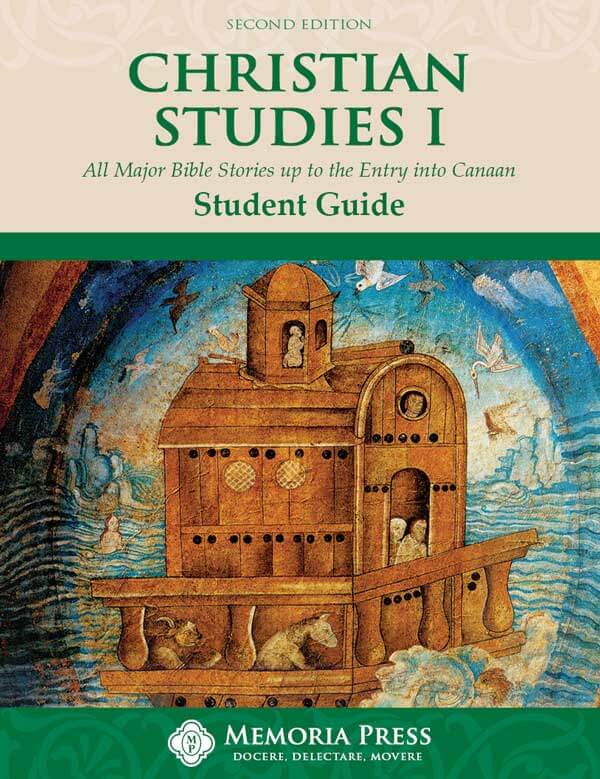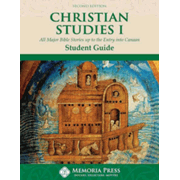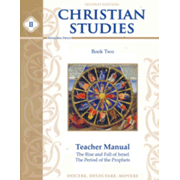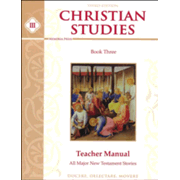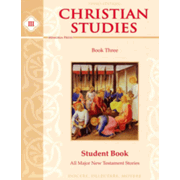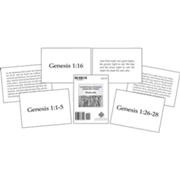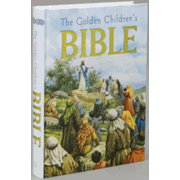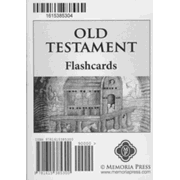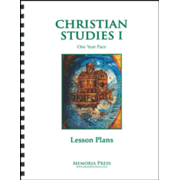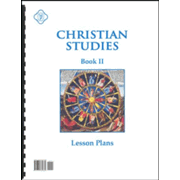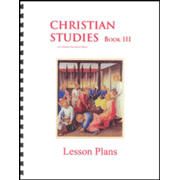Christian Studies I, II, and III are a series of three courses for studying The Golden Children's Bible (TGCB) and learning biblical geography. They were written for students in grades three through six. The courses can be used in any order, no matter the student's grade, since each course deals with a specific part of the Bible. TGCB itself uses the King James version of the Bible, adapting and editing for both length and propriety for children. TGCB is a composite of most of the Bible into a single narrative, and many books are condensed. The deuterocanonical books, such as Judith, Tobit, and Maccabees 1 and 2, are not included. You need a copy of TGCB, purchased separately, to use with all three Christian Studies courses, or if you prefer to use an adult Bible, the scripture references are listed for each lesson.
The Christian Studies courses divide TGCB into three parts for study. Christian Studies I covers creation, the patriarchs, and the Exodus. Christian Studies II covers the rise of Israel and the period of the prophets. Christian Studies III focuses on the New Testament, covering from the Annunciation and the birth of Jesus through the vision of John in Revelation. (Christian Studies IV is a review course for seventh and eighth graders that I discuss elsewhere.) The courses are necessarily selective about which books of the Bible are studied since there isn't time to cover all of them.
Each course has both a student and teacher manual. Teacher manuals have reduced copies of student pages with answers overprinted. Teaching instructions surround the student pages. There are also three optional sets of flashcards: Old Testament, New Testament, and Memory Verses. The Old Testament Flashcards are included as part of the Christian Studies I set and are also used with Christian Studies II. The New Testament Flashcards are used with Christian Studies III and are included in that set. The Memory Verse Flashcards can be used to help students memorize the verses specified in all three courses, and they may be purchased separately.
Teacher manuals provide a consistent approach for daily lessons that are designed for use with a class. To spread lessons out over five days per week, you can follow the plan as described below. It can easily be condensed to fewer days per week. Optional lesson plans are available from Memoria Press if you want more guidance on scheduling.
On the first day, students read through the assigned sections of TGCB, at least once on their own, and at least once "in class." Teachers discuss the reading, cover challenging vocabulary words, ensure that students understand the reading, and introduce the memory verse for the week.
On day two, students and their teacher go over the "facts to know"—names, places, and events. These are discussed, looked up on maps, and reviewed in the context of the bigger story. Students might also copy the facts into a notebook. This is the time to also review and drill facts from earlier lessons.
Day three is dedicated to working on the memory verse as well as reviewing previously learned verses.
On the fourth day, students work together on the comprehension questions to compose complete-sentence answers. Comprehension questions essentially require children to respond at the lower levels of reasoning rather than analyzing and making judgments.
Day five is for activities and tests. The activities include picture reviews, geography and map work, timelines, drawing, drills using flashcards, and recitations. There are chapter reviews plus cumulative reviews for every five lessons. Cumulative tests in the teacher manuals also cover every five lessons, so they are used about once per week. Additional discussion, composition, or research prompts can be used at your discretion.
All except Friday's lessons should take a half hour or less to complete.
These books are written with classical education in mind. They stress memorization, copywork, recitation, mastery of facts, and frequent review, all reflecting classical education's grammar-stage emphasis on acquiring basic knowledge. A little creativity might be needed on the teacher's part to make memorization, review, and recitation enjoyable. Using the optional discussion, research, and writing activities will probably make the lessons more interesting as well. Even without the optional activities, students should acquire a strong foundation in understanding the Bible and the basic story of salvation history.




